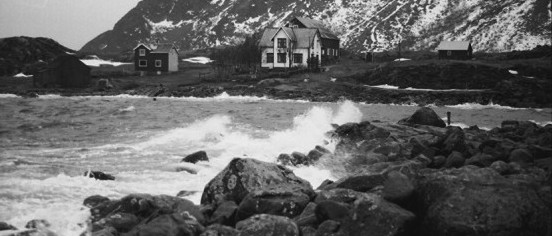 |
I remember the first time I visited relatives living inland. When I woke up in the morning something was missing. I couldn't hear the sea. I don't mean the sound of a single wave breaking against the shore, but the unbroken murmur from countless waves meeting a rocky coast. This "wall of sound" is allways a background near the ocean. |
Just like faces waves have to be seen from many different angles. Here I am staring a wave right in its face just as it is breaking close to the shore. Many photographers use a telephoto lens to make such a scene more dramatic. Not me. |
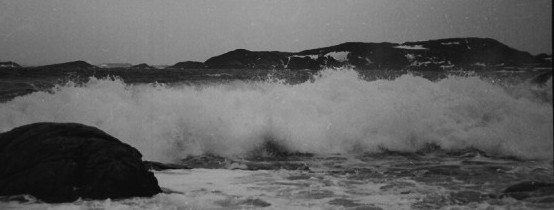 |
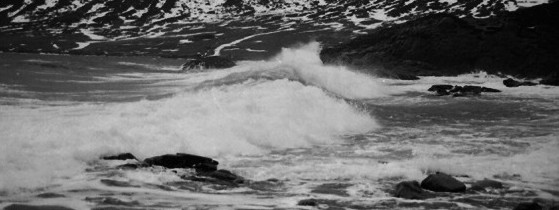 |
Here we have a side-view of a wave thundering towards its end. This photo shows that there are wide gaps between the wave ridges, at least when they are tall. This one isn't even a storm wave. The wind may have been "stiv kuling" - a strong breeze. |
|
You may call this angle a half-profile. In the background you can see the jagged form of the island Dyrøya. In front of it lies a lower and darker island, Børøya, topped by two humps. The low and near-black promontory in the left half of the photo is part of Skogsøya. |
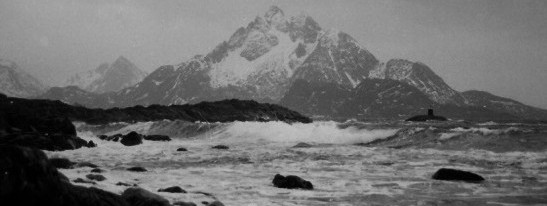 |
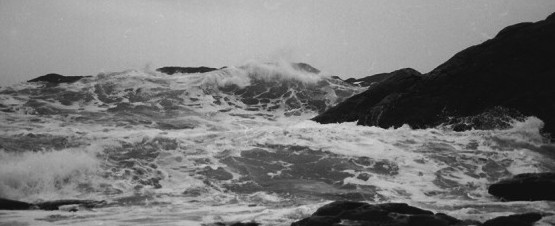 |
We use to "tease the waves", standing as far down the shore as we dared to, escaping from the roaring sea just seconds before the wave was breaking. You had to watch out, suddenly a much taller wave might appear, as in this photo. As a rule, every third wave were taller than the other. |
|
Now the wave begins to brake. The top will pick up speed, so it's time to run. Some didn't make it. I know that foolhardy boys have been overrun by the sea, and in a couple of cases it ended in a tragedy. But that was long time ago. Since then the daredevils have moved from the shore to the road. |
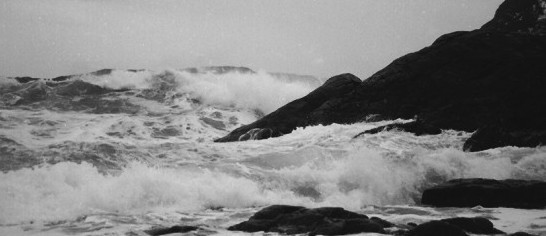 |
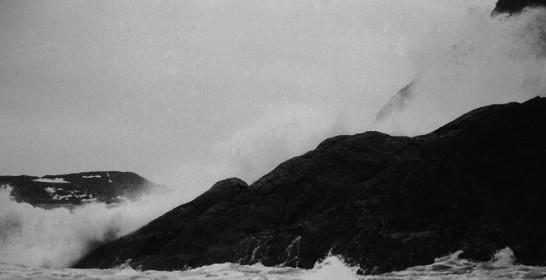 |
A mighty wave meets an even mightier headland and explodes into the air. White cascades of sea get caught by the wind and fly inland, spraying everything with salt water - plants, people and houses. After a stormy winter the windows were stained with salt and had to be cleaned, but the seaweed on the fields was welcome. Excellent manure. |
Of course, even the rocks bear marks of being pounded by heavy waves year by year. Big bouldres are moved around and grinded against each other. You can see the results below. But wait, what are the black patches on some of the stones? Right. Oil spill. Very bad manure. |
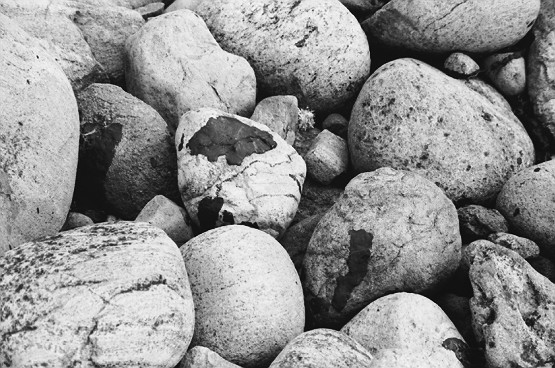 |
Below the waves there are two sources for wealth: Fish and oil. As long as the sea bottom keeps them well apart we can continue our fisheries. Oil drilling along our rocky and stormy coast will almost certainly result in this: Others will get the wealth. We will get the spills. And the fish will die.